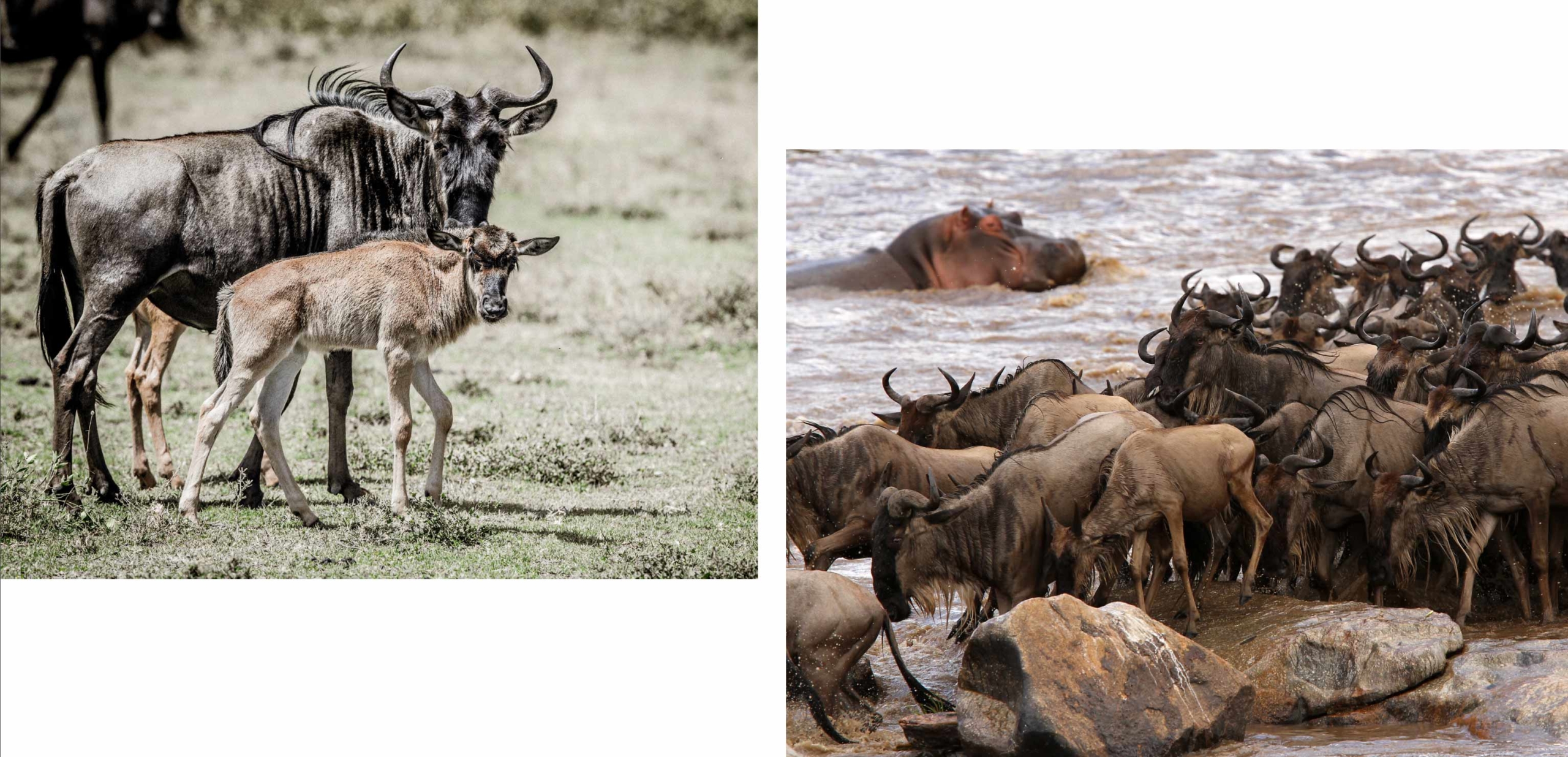The Serengeti is the archetypal setting for a safari, and it’s hard to imagine a Northern Tanzanian adventure without this iconic swathe of wilderness playing a starring role. Of course, equally renowned (if not more so) is the Great Migration, and as the foundational principle of the Legendary Expeditions Migrational Camps was to provide year-round front-row seats to this spectacle, we thought we’d offer some insight into the famed natural phenomenon that occurs on our very doorstep.
In essence, the wildebeest move through the Greater Serengeti Ecosystem in an annual cycle as old as the landscape itself. As are the wild and wonderful ways of nature, patterns differ from year to year. As anyone who’s watched wildebeest before will attest, it can be tricky to decipher the method in their madness, and there is always scope for unpredictability – but here is our attempt at an explainer, nonetheless.
Rainfall depending, the wildebeest herds usually arrive in Southern Serengeti in December and leave again in April. That’s roughly four months in which they completely transform and dominate the landscape, filling the wilderness as far as the eye can see, and trailing a feast of predators in their wake. The females arrive heavily pregnant, and during their stay, give birth to the entire next generation of wildebeest.
It’s hard to overstate the momentousness: this is where the Migration comes back to base… it’s the primordial start; the nascent source. Millions upon millions of calves have been birthed on these grounds, and they spend months grazing nutrient-rich grasses, gathering strength for the thousands of kilometres ahead of them.
The beauty of where we are in the Southern Serengeti is that we have it all to ourselves. Mwiba Lodge, Mila Tented Camp and our Migrational Camps are all nestled within hundreds of thousands of acres of exclusive concessions – which means we get to define safari on our own terms, and without any crowds in sight. It’s a magical time of year where this area comes into its own, and we make the most of it in myriad ways.
By May, good graze is getting thin on the ground, and the little ones have their legs under them – so the beasts head west. The ancient migratory routes weave them up through Central Serengeti and the Grumeti area – and the fascinating thing is that they rut on the run. The males declare temporary territories and fight for the right to as many females as they can, managing to simultaneously ensure the next generation of their species and move en masse to greener pastures, dodging predators all the while.
By June, our Migrational Camps have relocated to Northern Serengeti and by July the landscape begins to fill with innumerable herds. It’s a common misperception that the wildebeest all only cross the river once, on their way to Kenya – but happily, this is not so. They remain in the area for months, crossing back and forth in pursuit of grazing, chasing storms, avoiding predators and – seemingly – simply because they feel like it. It’s also not the entire Migration crossing at a time; they split into herds, each of which does what it likes, sometimes even crossing multiple times per day – or not at all.
There’s no real way of doing justice to the sheer thrill and drama of a crossing; it seems to transcend the rational, civilised mind and speak straight to the core of one’s animal being, and the effect is exhilaratingly mesmeric. To top it off, this area of the Serengeti is breathtakingly beautiful, and it’s important to be generous in your allocation of time to this patch of paradise. Make sure you can bear witness to as many crossings as possible – and also steal away from the riverine ruckus and get to grips with the spellbinding landscape and wealth of wildlife on offer.
By November, the smell of rains falling gently on the plains down South begins to lure the wildebeest back to the bottom of the Serengeti, and the herds hit the road to head back to base. As the year draws to a close, the Great Migration completes its cycle – and begins afresh.
Inspired? Speak to us


